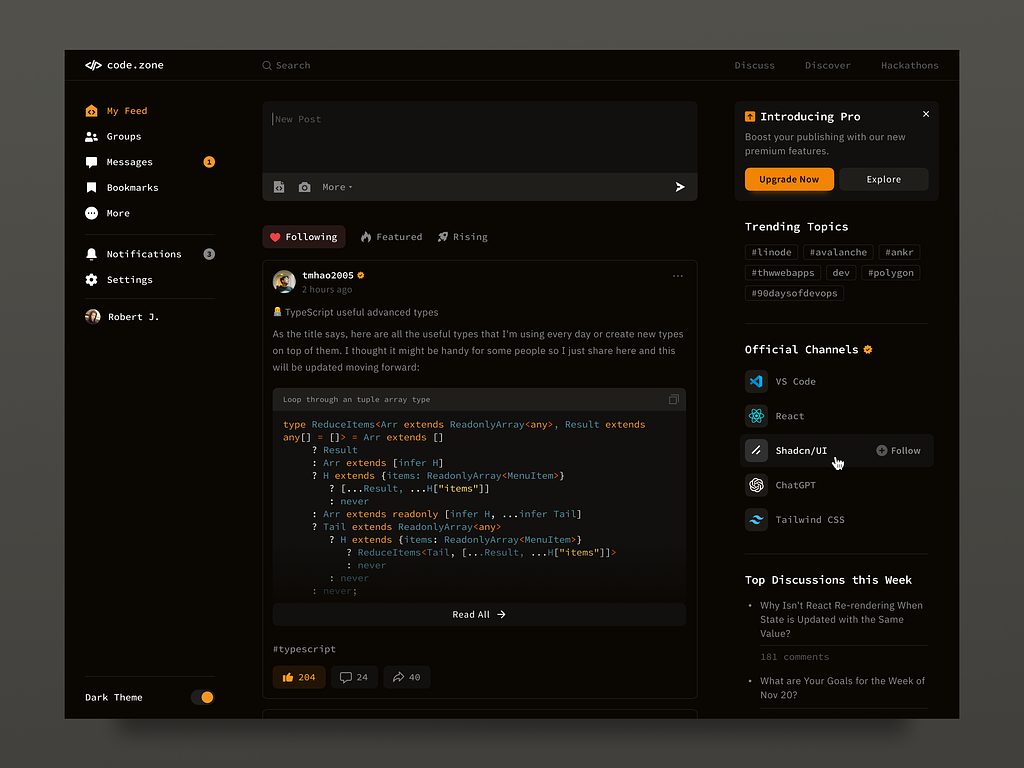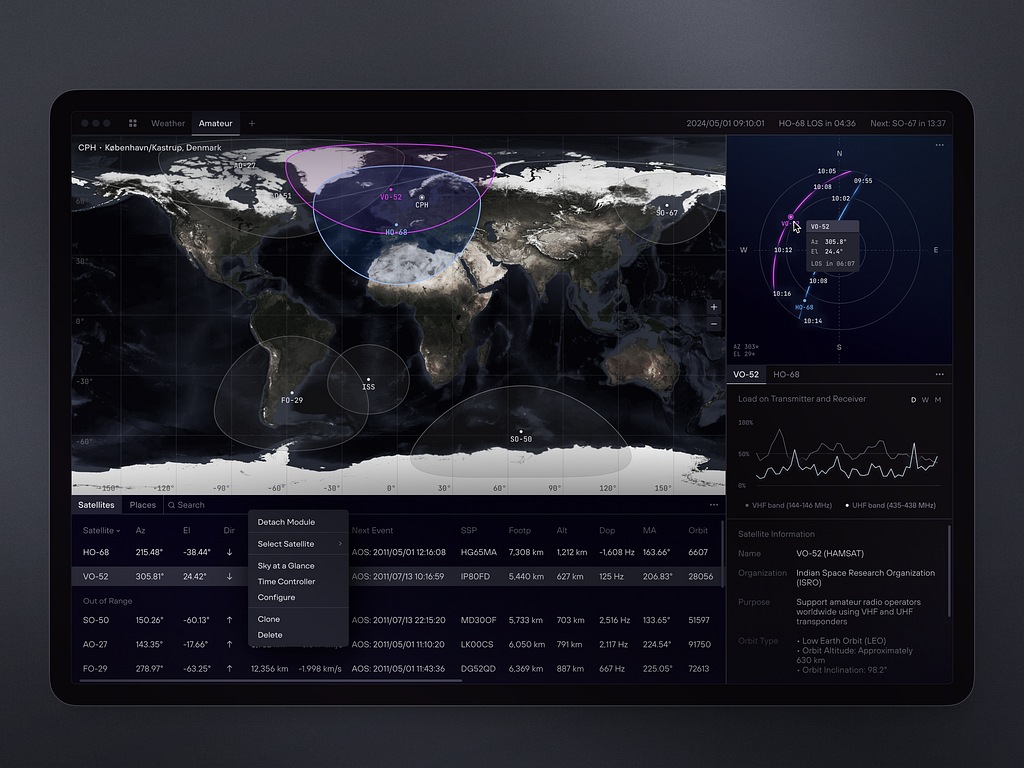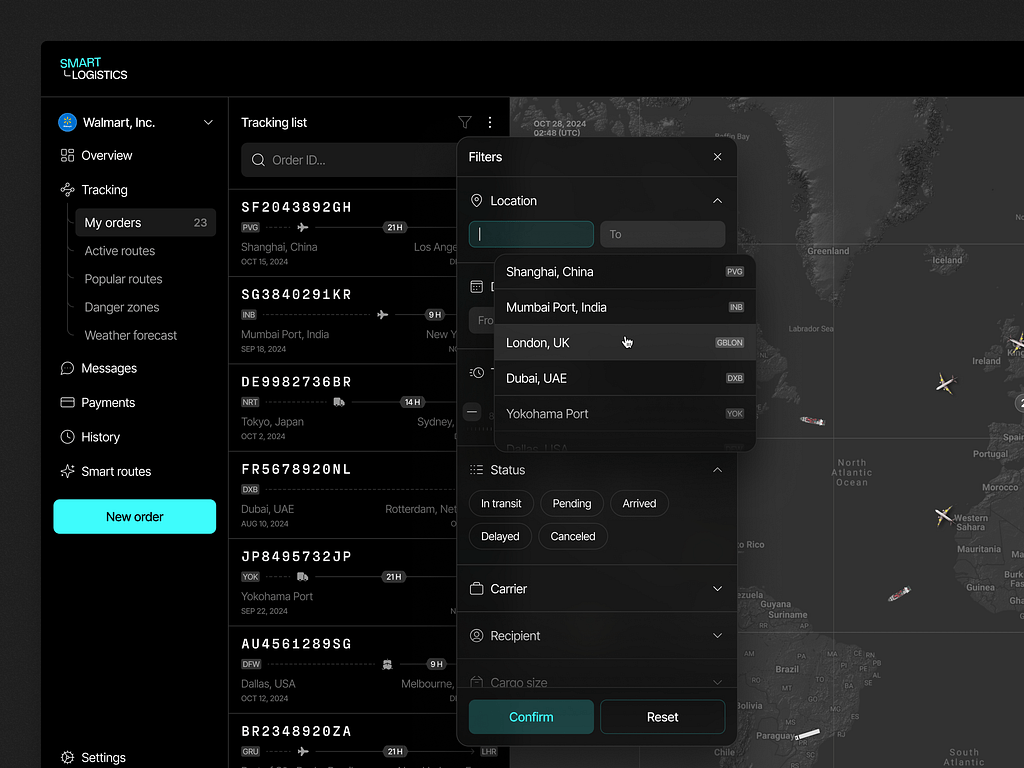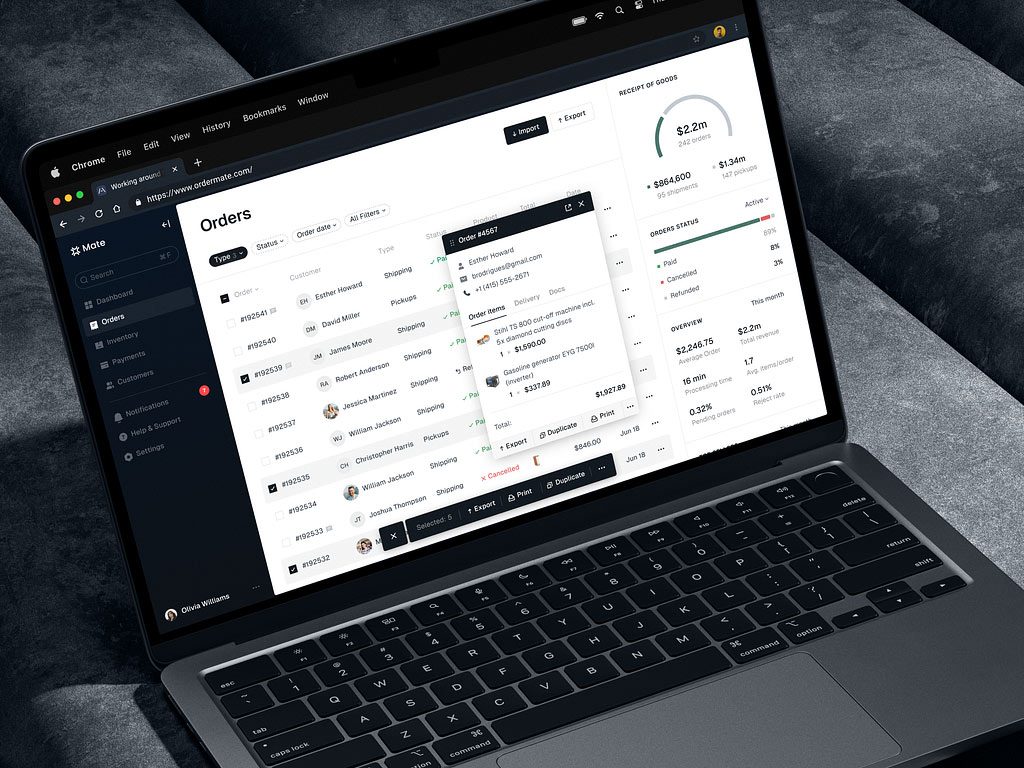It’s a common struggle among beginners—front end vs back end. How do you choose between creating stunning interfaces that engage users or crafting robust systems that power those interfaces behind the scenes? Both worlds have endless possibilities, yet deciding which to pursue can feel overwhelming.
Contents:
Many beginner developers also mix up these two directions apart at first. In this article, we’ll delve deep into the difference between front end and back end. By illuminating each domain’s nuances and pain points, we’ll help you make an informed decision that aligns with your passions and goals.
Let’s start with the general questions like—What is front and back end?
Front-End Development
What is Front-End Development and Its Role in Web Applications?
It refers to creating the visual and interactive aspects of a website or web application. The strategy involves everything that users see and interact with directly in their web browsers. This includes the layout, design, buttons, text, images, and overall user experience.
The front-end development plays a crucial role in web apps:
- User experience: it focuses on designing aesthetically pleasing and easy-to-navigate interfaces. A good user experience keeps visitors engaged and encourages them to explore further.
- Communication: the application communicates effectively with its users by responding to their actions, such as clicks or form submissions. This immediate feedback is essential for a smooth user interaction.
- Accessibility: web applications become accessible to all users, including those with disabilities. Following web standards and guidelines helps you create a more inclusive experience.
- Performance optimization: it improves speed and performance so that pages load quickly and run smoothly across different devices.
- Collaboration with back-end developers: front-end works closely with back-end to bridge the gap between the user interface and the server-side functionality. This way, the data is displayed accurately and can be manipulated in real-time.

Social Web Platform for Developers by Shakuro
How Does the Frontend of an Application Work?
To a regular person, the UI workflow looks like magic. You tap buttons, the screens switch, and here you go, the action completes. For a developer, it’s a combination of various technologies and processes. Together, they create an interactive and functional user interface.
For example, HTML (HyperText Markup Language). It is the foundation of all web pages. The language defines the layout and content of the web application, using tags to represent elements like headings, paragraphs, links, images, and more.
CSS (Cascading Style Sheets) controls the presentation of the HTML elements. How the app will look and feel, including colors, fonts, layout, and responsiveness for different devices (desktops, tablets, and smartphones).
JavaScript adds interactivity to the web application. It enables dynamic content updates, form validation, handling events (like clicks and keystrokes), and making asynchronous requests to the server (using AJAX) to fetch or send data without reloading the page.
Frontend development relies on various frameworks (like React, Angular, or Vue.js) and libraries (like jQuery). These tools provide pre-built components and functionalities, allowing developers to create complex user interfaces more efficiently.
When a user accesses a web application, their browser retrieves HTML, CSS, and JavaScript files from a server. The browser interprets these files and performs browser rendering—representing the content on the screen. It creates a “Document Object Model” (DOM) which is an interactive representation of the web page that JavaScript can manipulate.
As users interact with the app by clicking buttons and filling out forms, JavaScript responds to these events, possibly changing to the DOM or communicating with the server for data updates.
Front end applications often communicate with backend services via APIs (Application Programming Interfaces). With their integration, the front end can send and receive data, enabling features like user authentication, data retrieval, and real-time updates.
Thanks to a combination of technologies like HTML, CSS, and JavaScript, frontend developers can build an engaging user interface, handle user interactions, and communicate with backend services through APIs.
What are the Key Responsibilities of Front-End Development?
When comparing backend vs frontend development, it’s important to draw a line between key responsibilities. As we said before, the front end creates functional and visually appealing web applications.
Here are the tasks you will likely face:
- Building user interfaces: designing and coding the user-friendly and intuitive visual elements of a web application.
- Responsive design: the application should work well on various devices and screen sizes. This is archived with responsive design techniques, such as fluid grids and media queries.
- Cross-browser compatibility: it should also be compatible with different web browsers (like Chrome, Firefox, Safari, etc.) and adhere to web standards.
- Performance optimization: optimizing load times and responsiveness, which involves compressing images, minifying CSS and JavaScript, and leveraging caching techniques.
- Accessibility: follow accessibility standards (such as WCAG), including proper use of ARIA roles and semantic HTML. This allows people with disabilities to use web apps.
- Version control and collaboration: leverage version control systems (like Git) to manage code changes. Also, collaborate with other team members, including designers and back-end developers, to integrate their work effectively.
- Testing and debugging: conducting tests to identify and resolve bugs or issues in the user interface, for instance, unit testing, integration testing, and user acceptance testing.
- User experience focus: work together with UX designers to ensure the final product provides a positive and engaging experience for users, based on research and feedback.

Dashboard Design for Satellite Monitoring by Shakuro
Essential Skills for Front-End Development
If you want to opt for this career after comparing front end vs back end, there are several essential skills you need to possess. Some of them are obvious and can be applied to any developer, some are more niche and are based on front end technologies. They help you create engaging, functional, and accessible web applications while fostering collaboration within development teams.
- HTML/CSS: first of all, proficiency in HTML and CSS is a must. One is essential for structuring content and the other for styling and layout. Understanding CSS preprocessors like SASS or LESS is a plus.
- JavaScript: strong knowledge of JavaScript is already required, including ES6+ features. It is crucial for adding interactivity and dynamic behavior to web applications.
- Responsive web design: you need to familiarize yourself with techniques and frameworks (like Bootstrap or Tailwind CSS) to create responsive designs that function well on various devices.
- Version control/Git: to track changes, collaborate with team members, and manage code effectively, you should have experience with version control systems, particularly Git.
- JavaScript frameworks/libraries: proficiency in modern JavaScript frameworks or libraries such as React, Angular, or Vue.js significantly enhances productivity and code maintainability.
- Understanding of APIs: knowledge of how to work with RESTful services and APIs to fetch and manipulate data asynchronously using tools like Fetch API or Axios.
- UX design principles: since you will work with interfaces and app visuals, you need to understand UX principles.
- Cross-browser compatibility: the app has to work correctly on various platforms and browsers, so a front end developer needs to be familiar with all the nuances.
- Performance optimization: you will have to polish the product, such as reducing page load times, utilizing lazy loading, and implementing best practices for front-end performance.
- SEO basics: this one is not obvious, as this skill is reserved for marketing departments. However, understanding search engine optimization principles helps you build web applications that are easily discoverable by search engines.
Tools and Frameworks Required for Front-end Development
Apart from skills, you need to be an expert in different tools to create responsive web apps. New technologies emerge each year, changing the toolkit. So we will dwell on the most popular ones. To streamline the development process, enhance productivity, and improve the quality of the final product, you can leverage these tools and frameworks:
Text editors/IDEs
- Visual Studio Code: A highly popular code editor with various extensions that enhance functionality.
- Sublime Text: A lightweight text editor known for its speed and simplicity.
- Atom: An open-source editor with a customizable interface.
Version control
- Git: A version control system to manage code changes and collaborate with other developers.
- GitHub/GitLab/Bitbucket: Platforms for hosting Git repositories and facilitating collaboration.
CSS Frameworks
- Bootstrap: A powerful front-end framework for responsive design.
- Tailwind CSS: A utility-first CSS framework that allows for rapid design without leaving your HTML.
JavaScript libraries&frameworks
- React: A JavaScript library for building user interfaces, particularly single-page applications.
- Vue.js: A progressive JavaScript framework for building UIs and single-page applications.
- Angular: A platform for building web applications with a full-fledged MVC framework.
Package managers
- npm (Node Package Manager): A package manager for JavaScript that helps install libraries and manage dependencies.
- Yarn: An alternative package manager that allows fast and reliable dependency management.
Task runners and module bundlers
- Webpack: A module bundler that compiles JavaScript modules and assets into a single bundle.
- Gulp: A toolkit for automating tasks in your development workflow, such as minification and compilation.
- Parcel: A zero-configuration web application bundler with a focus on simplicity.
Development tools
- Chrome DevTools: Built-in developer tools in Chrome for debugging and optimizing web applications.
- Postman: A tool for testing APIs and helping with network requests.
Design tools
- Figma: A cloud-based design tool used for UI/UX design and collaboration with designers.
- Adobe XD: A vector-based design tool for creating wireframes and prototypes.
Testing frameworks
- Jest: A testing framework for JavaScript, often used with React applications.
- Mocha/Chai: Testing libraries for running unit tests in both Node.js and browser contexts.
- Cypress: A testing framework focused on end-to-end testing for web applications.
Content Management Systems (CMS)
- WordPress: A popular CMS that requires front-end development skills, especially for theme and plugin development.
- Joomla/Drupal: Other CMS options where front-end development skills can be applied.

Logistic Company Dashboard by Conceptzilla
Instances of Front-End Tasks and Projects
If we compare frontend vs backend development, these tasks focus on UI/UX for web applications. They require technical skills, creativity, and attention to detail.
Of course, the most common task is website development. You build static websites with responsive designs that adapt to different screen sizes and devices. The primary tools are HTML, CSS, and JavaScript.
You will also be responsible for developing Single-Page Applications (SPAs), using frameworks like React, Vue.js, or Angular. SPA is an app that works within a browser and doesn’t need to reload the page for every action. For instance, Gmail or Google Drive.
Apart from SPAs, you will be working on Progressive Web Apps (PWAs). These are standalone apps that users can install on their devices. The main goal is to provide a native app-like experience on the web, including offline capabilities and push notifications.
Together with UI/UX designers, you will implement user interfaces based on wireframes and prototypes. Also, the tasks include creating interactive elements such as buttons, forms, and navigation menus.
Another issue is API integration: connecting front-end applications to back-end services through RESTful APIs or GraphQL to fetch and display data.
E-commerce development is one of the essential tasks. Front-end developer builds online stores with features like product listings, shopping carts, and payment gateways.
When dealing with Content Management Systems, you will customize themes and templates for CMS platforms like WordPress, Joomla, or Drupal to meet specific design requirements.
Back-End Development
What is Back-End Development and its role in web applications?
Here is where the main difference between frontend and backend in website development lies. Back-end refers to the server-side of web applications, where the logic, database interactions, and business processes are handled. It is responsible for managing the data exchange between the client side and the server. Back-end developers work on the server, databases, and application logic to ensure that everything operates smoothly behind the scenes.
- Database management: creating and managing databases to store, retrieve, and manipulate data. This includes defining database schemas, writing queries, and ensuring data integrity.
- Server-side logic: write the logic required to process requests from front-end applications, perform calculations, and execute various operations necessary to fulfill user requests.
- API development: build APIs that allow front-end applications to communicate with the server. This can include RESTful APIs or GraphQL endpoints.
- User authentication and authorization: implementing secure user authentication systems to manage accounts, roles, and permissions to protect sensitive data and functionalities.
- Data security: providing data security through encryption and secure communication (such as HTTPS), protecting against common security vulnerabilities like SQL injection and cross-site scripting (XSS).
- Integration with external services: integrating web applications with third-party services, such as payment gateways, email services, and external APIs, to extend functionality.
- Server management: managing server infrastructure, including deployment, server configuration, and maintaining uptime through services like cloud hosting (AWS, Azure, etc.).
- Business logic implementation: building specific business rules and processes, ensuring that applications behave as intended according to the organization’s requirements.
Back-end development plays a crucial role in the overall functioning of web applications. It acts as the backbone of any web project, powering the user experiences delivered through the front-end.
How does the backend of an application work?
When comparing front-end vs back-end development, you can see that the latter operates behind the scenes and is not visible to users.
It is responsible for processing data and serving requests. The back-end works with a server, databases, and APIs to execute business logic, manage user authentication, and ensure the integrity and security of the application, all while communicating seamlessly with the front-end.
Let’s see how it works:
The back-end runs on a server, which processes requests from the front-end. This server could be a remote machine or cloud-based infrastructure. When the front-end makes a request, the back-end handles this request by retrieving necessary data from the database, executing any business logic required, and sending back a response.
It also typically involves a database to store and manage data. Common databases include SQL databases (like MySQL, PostgreSQL) and NoSQL databases (like MongoDB, Firebase). The back-end communicates with the database to create, read, update, and delete (CRUD) data.
It exposes APIs to communicate with the front-end. They define the methods for retrieving or submitting data and allow for interaction between the client and server.
The back-end contains the core business logic that dictates how data is processed and managed. This can include validation rules, authentication, authorization, and data manipulation processes.
Various programming languages, including Python, Java, Ruby, PHP, Node.js, and others are used in back-end development. These languages help create the server-side logic and manage data operations.
Frameworks like Express (for Node.js), Django (for Python), and Ruby on Rails (for Ruby) streamline development by providing tools and libraries that make it easier to build applications. They often include built-in security features, routing, and middleware support.
It manages user authentication and authorization. This means users can only access data and features they are allowed to.
Back-end developers also manage data life cycles, including how data is stored, organized, indexed, and retrieved. They ensure data integrity and consistency using transactions.
To handle varying loads, back-end applications are designed for scalability. This involves load balancing, caching frequently accessed data to reduce load, and optimizing queries for performance.
The back-end is crucial for implementing security measures to protect sensitive data from threats, including validation of input data, encryption, and secure communication protocols (like HTTPS).
What are the Key Responsibilities of Back-End Development
In front end vs back end comparison, the difference lies in responsibilities as well. They are focused on server-side development, which is hidden from the user’s eyes.
Let’s see what exactly you will be doing:
- Server-side logic: implementing business logic that processes data and executes tasks as per the application’s requirements.
- Database management: designing, implementing, and maintaining databases. This includes creating schemas, managing data integrity, writing queries, and optimizing data storage.
- API development: creating and maintaining APIs that allow front-end and other services to interact with the back-end system. You will deal with defining endpoints, request handling, and response formatting.
- Authentication and authorization: adding secure user authentication and authorization mechanisms to ensure that data is accessed only by authorized users.
- Performance optimization: monitoring and optimizing server performance, including database queries, loading times, and response times to ensure a smooth user experience.
- Error handling and logging: implementing error handling and logging systems to track issues, help with debugging, and monitor the application’s health.
- Scalability planning: designing the architecture to accommodate growth in user load, so the application can handle increased requests and data.
- Testing and quality assurance: writing unit tests, integration tests, and performing debugging to ensure that the back-end functions correctly and meets requirements.
- Documentation: creating and maintaining documentation for the server-side architecture, APIs, and any other relevant components to ensure clarity and maintainability.
- DevOps practices: implementing DevOps practices for continuous integration and delivery (CI/CD) to streamline the deployment process and improve workflow efficiency.

E-Commerce Admin Dashboard by Shakuro
Essential Skills for Back-End Development
The position requires a diverse set of skills to build and maintain server-side applications effectively. It may be daunting but some of them are essential and some you can obtain while working on the position.
What is backend essential skillset?
- Programming languages: proficiency in Python, Java, Ruby, PHP, C#, or JavaScript (Node.js) to create server applications.
- Database management: knowledge of both SQL (e.g., MySQL, PostgreSQL) and NoSQL (e.g., MongoDB, Cassandra) databases to design and manage data storage.
- API design and development: understanding of RESTful services and API design principles to create robust and scalable APIs for communication between front-end and back-end.
- Version control systems: familiarity with version control tools like Git to manage code changes and collaborate with other developers.
- Web server technologies: experience with web server technologies such as Apache, Nginx, or Microsoft IIS for deploying applications.
- Authentication and security protocols: knowledge of authentication mechanisms (e.g., OAuth, JWT) and security best practices to protect sensitive data and prevent vulnerabilities.
- Frameworks and libraries: proficiency in relevant back-end frameworks and libraries, such as Django or Flask (for Python), Spring (for Java), or Express (for Node.js), to streamline development.
- Understanding of front-end technologies: since you will work with front-end developers, you need a basic knowledge of these technologies (HTML, CSS, JavaScript) to understand how the back-end integrates with the user interface.
- DevOps and cloud services: familiarity with cloud platforms like AWS, Azure, or Google Cloud, as well as an understanding of DevOps practices for CI/CD pipelines.
Tools and Frameworks Required for Back-end Development
Frontend and backend in website development require expertise in different instruments. Together with programming languages, you need to wield various frameworks, management tools, etc. Leveraging these toolkits, you can build, manage, and deploy applications effectively.
Frameworks
- Django (Python): A high-level web framework that encourages rapid development and clean, pragmatic design.
- Flask (Python): A microframework for Python based on WSGI, which is lightweight and easy to extend.
- Express.js (Node.js): A minimal and flexible Node.js web application framework providing a robust set of features.
- Spring Boot (Java): A package of the Spring framework that simplifies the setup of new applications.
- Ruby on Rails (Ruby): A server-side web application framework that follows the MVC architecture.
- ASP.NET (C#): A framework for building enterprise-grade web applications.
Database management tools
- MySQL: An open-source relational database management system.
- PostgreSQL: A powerful, open-source object-relational database with a strong reputation for reliability.
- MongoDB: A NoSQL database that uses a JSON-like format, great for handling unstructured data.
- Firebase: A cloud-connected platform that provides a NoSQL database and backend services.
API Development Tools
- Postman: A tool for API development that helps in testing APIs.
- Swagger: A framework for API documentation, allowing automatic generation of API documentation.
- Insomnia: A powerful REST API client for debugging and testing HTTP requests.
Version control systems
- Git: A distributed version control system for tracking changes in source code during development.
- GitHub/GitLab/Bitbucket: These are platforms for hosting Git repositories and managing code collaboration.
Testing tools
- JUnit (Java): A widely used testing framework for Java applications.
- PyTest (Python): A framework for writing simple and scalable test cases for Python code.
- Mocha/Chai (Node.js): Testing frameworks for Node.js applications.
Containerization and orchestration
- Docker: A platform for developing, shipping, and running applications in containers.
- Kubernetes: An orchestration tool for automating the deployment, scaling, and management of containerized applications.
Deployment tools
- Heroku: A cloud platform that allows developers to build, run, and operate applications entirely in the cloud.
- AWS: Provides a range of cloud computing services to host and manage applications.
- DigitalOcean: A cloud infrastructure provider known for its simplicity and developer-friendly environment.
Monitoring and logging tools
- Logstash: A tool for collecting and parsing logs.
- Prometheus: An open-source system monitoring and alerting toolkit.
- Grafana: A visualization tool that works with various data sources to monitor server performance.

Web UI Redesign for Stable Diffusion by Shakuro
Instances of Back-End Tasks and Projects
What projects will you work with in this position? You will deal with API development, database management, user authentication, etc.
Let’s compare backend vs frontend development in terms of potential task pool:
During web app development, you will build RESTful APIs to enable communication between the front-end and back-end. Also, this includes creating GraphQL APIs to allow clients to request only the data they need.
You will design and implement database schemas to store application data efficiently. With data migration scripts, you ensure smooth transitions when changing database structures.
Leveraging your skills, implement secure user authentication systems using OAuth, JWT, or custom login systems. What’s more, you will set up role-based access control (RBAC) for different user roles in an application.
To make the app work, you will write business logic to handle requests, process data, and return appropriate responses. Implement algorithms for tasks such as payment processing, user registration, and data validation.
The task pool includes creating background jobs for time-consuming tasks like sending emails, processing images, or generating reports using tools like Celery or Sidekiq. Regular tasks like data backups or scheduled notifications are automated with cron jobs setup.
Data integration is also an essential instance. Third-party services and APIs enhance application functionality, such as payment gateways (e.g., Stripe, PayPal). To manage large datasets, build data pipelines for ETL (Extract, Transform, Load) processes.
You will set up real-time communication features using WebSockets for applications like chat services or live notifications.
Some projects require developing custom CMS solutions to allow non-technical users to update website content. Often tasks include creating plugins or extensions for existing CMS platforms like WordPress.
In e-commerce development, you will build server-side app components, including product catalogs, shopping carts, and order processing. The tasks often include integrating inventory management systems to track stock levels.
As a back end developer, you will work with data analytics and reporting. This includes creating analytical tools or dashboards to visualize data and generate reports based on user activities and application metrics. To track application performance and usage, you will implement logging and monitoring solutions.
Front-end or Back-end – Which One Should You Learn?
Now you know the difference between backend vs frontend development.
Front end developers focus on the visual aspects of a website, creating a user-friendly interface that engages visitors. They use HTML, CSS, and JavaScript to bring designs to life and ensure that websites function seamlessly across devices.
On the other hand, back end developers work behind the scenes, managing servers, databases, and application logic. They use languages like Python, Ruby, and PHP to ensure that data flows correctly and that the website operates smoothly for users.
If you recognize these differences, you can better align your skills and interests with the right path in web development. If you find joy in design and user experience, front end may be your niche. However, if you’re intrigued by logic, data management, and server architecture, the back end might be the place for you.
Do you need a skilled team to develop your next project? Reach out to us and let’s work together to create a web app that strengthens your digital services.

